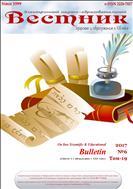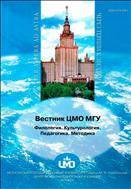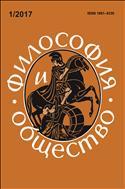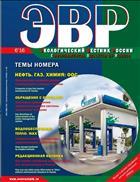Contact Interaction of a Claw Washer with Wood at Limiting Shear = Контактное взаимодействие когтевой шайбы с древесиной от предельного сдвигаContact Interaction of a Claw Washer with Wood at Limiting Shear = Контактное взаимодействие когтевой шайбы с древесиной от предельного сдвига 
When designing, manufacturing and maintaining of woodworks and elements of wooden
structures it is necessary to solve the problem of providing the calculation of strength,
stiffness and their bearing capacity. This problem becomes particularly relevant while
reconstructing and new wooden house building, as the correct choice of connection type
influences the technical possibility to use wood in the elements of structures. Such types of
special connectors as claw washers, gang nails, dowel connections, etc. are used for these
purposes. The existing range of claw washers implies different diameters, thicknesses,
and claw configurations depending on the required bearing capacity and cross-sectional
dimensions of sawn timber. The accepted physical model of wood is a transtropic body. The
forces transmitted in the joints of the elements of wooden structures are perceived by the
total contact surface of the mating elements. However, the work of individual teeth of claw
washers has been poorly studied: research on influence of geometrical characteristics of the
tooth on the bearing capacity of the connector is absent; variation in thickness of the
connector is not assessed. A double-sided claw washer of the Bulldog type (prototype) with
the diameter of 50 mm was adopted as the object of study. Various schemes of cutting of the
claw washer with predetermined dimensions (width and height) of a triangular tooth are
considered. The influence of dimensions on the bearing capacity of the thickness of claw
washers is estimated within 1–1.5 mm. The main criterion for the selected cutting patterns is
the ability to produce the washers by single-impact stamping without additional trimming.
Double-sided claw washers of 5 different types with the number of cog-teeth from 8 to
12 items on each side were studied. A differential equation of the 4th order is accepted as a
mathematical model of cog-tooth action. The equation describes the behavior of a dowel on
an elastic base with a fixed value of bending stiffness EI. The transition to which was
carried out from the variable value EI = f(x) by searching for the equivalent width of the
cross-section from the bending conditions of the element of the triangular section of a
variable directed normal to the frontal surface and a constant directed normal to the lateral
surface. For citation: Popov E.V., Ruslanova A.V., Sopilov V.V., Zdralovic N., Mamedov S.M.,
Labudin B.V. Contact Interaction of a Claw Washer with Wood at Limiting Shear. Lesnoy
Zhurnal [Russian Forestry Journal], 2020, no. 4, pp. 178–189. DOI: 10.37482/0536-1036-
2020-4-178-189 |
|
18.08.2025Все новости Стартовала подписная кампания на 2026 годОткрыта подписка на 2026-й год на сайте Пресса по подписке |
ПОДПИСКА НА ЖУРНАЛЫ И ГАЗЕТЫ ON-LINE1
Мы используем cookie. Это позволяет нам анализировать взаимодействие посетителей с сайтом и делать его лучше. Продолжая пользоваться сайтом, вы соглашаетесь с использованием файлов cookie.
Подробнее можно ознакомиться на странице политики конфиденциальности и политики обработки персональных данных.
© 2005-2023 Агентство «Книга-Сервис»
107996 Москва
Протопоповский пер. 19, стр.12
E-mail: public@akc.ru

































